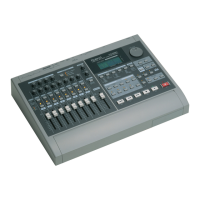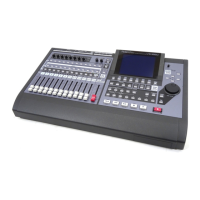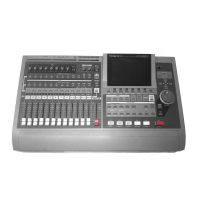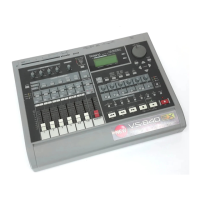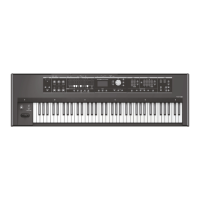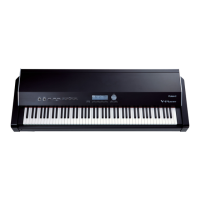26—Automix
344 www.Roland.com Roland VS-2000 Owner’s Manual
To load an Automix:
1. Press F3 (LOAD)—the Automix loading screen appears.
2. Highlight the Automix you want to load.
3. Press F5 (OK)—the VS-2000 asks “Load Automix Pattern?”
4. Press ENTER/YES to proceed or EXIT/NO to cancel the loading.
The F2 (ERASE) Button
To erase all of the currently loaded Automix data at once, press F2 (ERASE).
Activating Automix Mode
1. Stop project playback.
2. Press AUTOMIX—it lights solidly to show Automix mode is active.
3. To turn Automix mode off, press AUTOMIX again—its light turns off.
Recording Automix Data
You can record Automix data two ways:
•
Realtime Automix
—Realtime Automix records changes you make to parameter
values as the project plays. This method captures every subtle change you make,
and is the best method to use when you’re making constant adjustments to your
parameter values over the course of a project. You can also punch in new parameter
value changes in realtime.
•
Snapshot Automix
—Snapshot Automix, as its name suggests, captures your mix
settings at a particular moment. Whenever the now line travels back to that
moment when Automix is turned on, the snapshot’s settings are instantly recalled.
Snapshots are great for sudden changes to a mix—at the beginning of a solo, for
example, when a guitarist’s level has to be made louder. You can smooth the
transition to a snapshot’s settings using Automix GRADATION (Page 352).
You can use the two approaches for different parts of the same mix if you like.
When you load an Automix, it replaces the currently loaded Automix. If you don’t want
to lose your current Automix, makes sure to save it before loading a different one.
When you erase Automix data, you erase only the currently loaded Automix data. Any
Automix you’ve saved remains intact and can still be loaded.
In order to automate a parameter’s value, its parameter group must be checkmarked in
the AUTOMIX screen’s WRITING PARAMETER area—see Page 342.
VS2000OMUS.book 344 ページ 2004年10月20日 水曜日 午後3時3分

